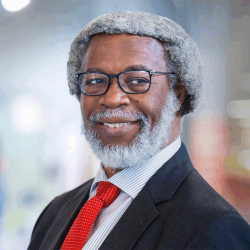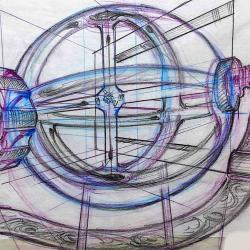UMD alumna Ana Maria Rey wins MacArthur Foundation "genius grant"
When researchers at the National Institute of Standards and Technology unveiled the most accurate atomic clock ever built last month, physicists hailed it as a breakthrough made possible by the ideas of theoretical physicist Ana Maria Rey. And now the John D. and Catherine T. MacArthur Foundation has tapped Rey, who earned her PhD at the University of Maryland in 2004 and continues to work with colleagues here, as a MacArthur Fellow – also known as a “genius grant” winner – for 2013.
Rey’s work provided the theoretical underpinning for the development of this atomic clock and other, similar experimental devices, said Charles Clark, an expert on ultracold atoms who was Rey’s PhD advisor.
“She has figured out new ways of improving the accuracy of atomic clocks that have never been thought of before,” said Clark, a fellow and co-director of the Joint Quantum Institute in Gaithersburg, which is a collaboration between UMD and NIST. “Her theories have been proven correct by some of the most accurate atomic physics experiments that have ever been performed.”
Rey is an expert on atomic, molecular and quantum physics, known for her recent work in optical lattice clocks. These ultra-accurate devices are the next generation of precision time keepers, with atoms super-cooled to a few millionths of a degree above absolute zero – and trapped in a lattice made of intersecting beams of laser light. The large number of atoms suspended in the optical lattice is the key to the clock’s stability over short times.
Rey’s contribution was to develop a theoretical framework for quieting the “noise” generated by atomic collisions, thus eliminating tiny variations in the clock’s ticks, Clark said. Her ideas also laid the groundwork for related work at NIST this summer, in which researchers set a record for the most accurate atomic clock ever produced.
In a paper published in the Aug. 9, 2013 issue of Science, Rey and several colleagues reported they have built an optical lattice clock based on atoms of the alkaline earth element strontium. The clock uses 100 stacked layers of about 20 strontium atoms each.
These atomic clocks are not only exquisitely accurate timepieces capable of new breakthroughs in precision measurements. Their stability gives scientists the ability to probe the behavior of atoms in novel states of matter, including quantum magnets and superfluids. Thus the strontium clock can also serve as a quantum simulator, modeling the quantum mechanical behavior of novel materials such as superconductors, which are now the subjects of intense research because of their potential for major advances in computing and related fields.
On Tuesday morning Clark got an email announcing that Rey had won the 2014 Maria Goeppert Mayer Award, a prestigious prize awarded by the American Physical Society. When a second email appeared in his in-basket that afternoon announcing good news about Rey, “My first thought was, ‘I’ve already seen this,’” Clark said.
But the MacArthur Fellowship, one of 24 announced today by the MacArthur Foundation, was a brand-new honor for Rey. The fellowship carries a $625,000 gift, spread out over five years, intended to allow the recipient to pursue whatever work she chooses.
Rey, a native of Colombia, first came to UMD shortly after getting her B.S. from the University of the Andes in 1999, when she when she took a preparatory course for first-year graduate students facing a rigorous PhD qualifying exam. Clark was the course instructor, and after enrolling as a UMD graduate student, Rey joined his laboratory.
Clark said many of the questions Rey asked him pushed the boundaries of the current state of our understanding in theoretical physics, to the point of being as yet unanswerable.
“I could get through maybe five of her questions before I threw in the towel,” Clark said. “Our Nobel laureate in physics, (Distinguished University Professor) Bill Phillips, went to maybe seven questions” before being stumped for an answer.
“It was pretty clear she was going to be a big success,” Clark said.
In 2005, Rey won an international award from the American Physical Society for the best PhD thesis in atomic, molecular and optical physics. She was the first woman to win that award, Clark said. She went on to a postdoctoral position at Harvard and then to a professorship at the University of Colorado, where she is a fellow at JILA (formerly known as the Joint Institute for Laboratory Astrophysics). She continues to collaborate with her former University of Maryland, NIST and Joint Quantum Institute colleagues including JQI Fellow Alexey Gorshkov, a co-author on the Science paper.
-UMDCP/CMNS
Media contact: Heather Dewar 301-405-9267
In this video, Rey describes her love of science, her work and her MacArthur Fellowship plans.
M.J. Martin, M. Bischof, M.D. Swallows, X. Zhang, C. Benko, J. von-Stecher, A.V. Gorshkov, A.M. Rey, Jun Ye, “A quantum many-body spin system in an optical lattice clock”, published in Science, August 9, 2013.
Abstract available to non-subscribers at http://www.sciencemag.org/content/341/6146/632.abstract?sid=502892a4-446c-4028-b278-324f60a0aec9







